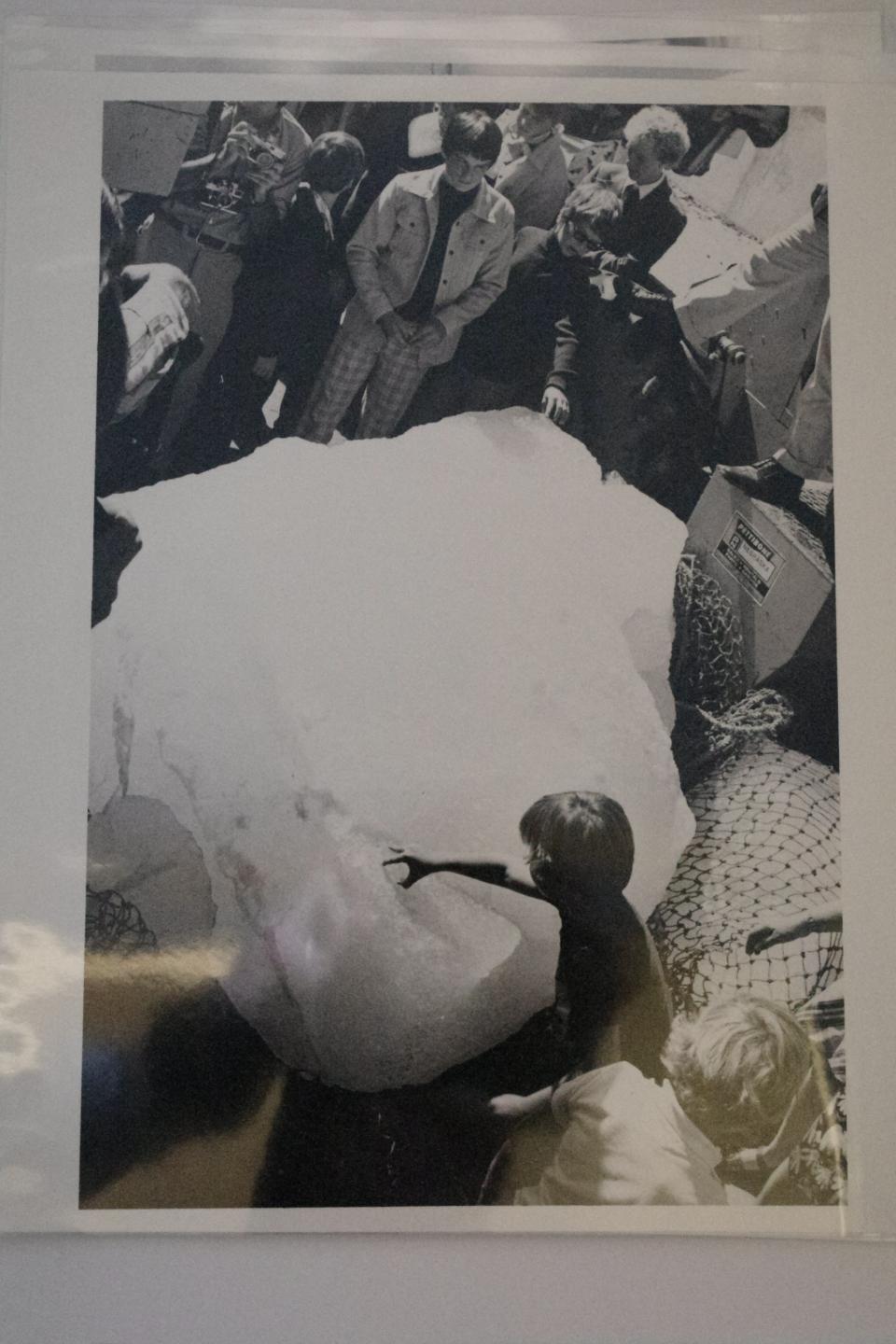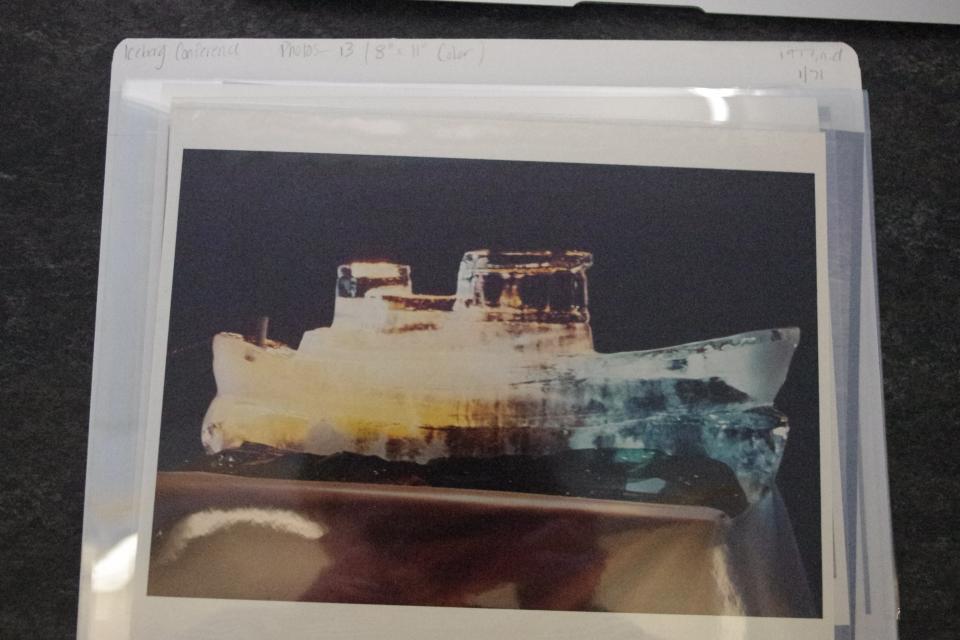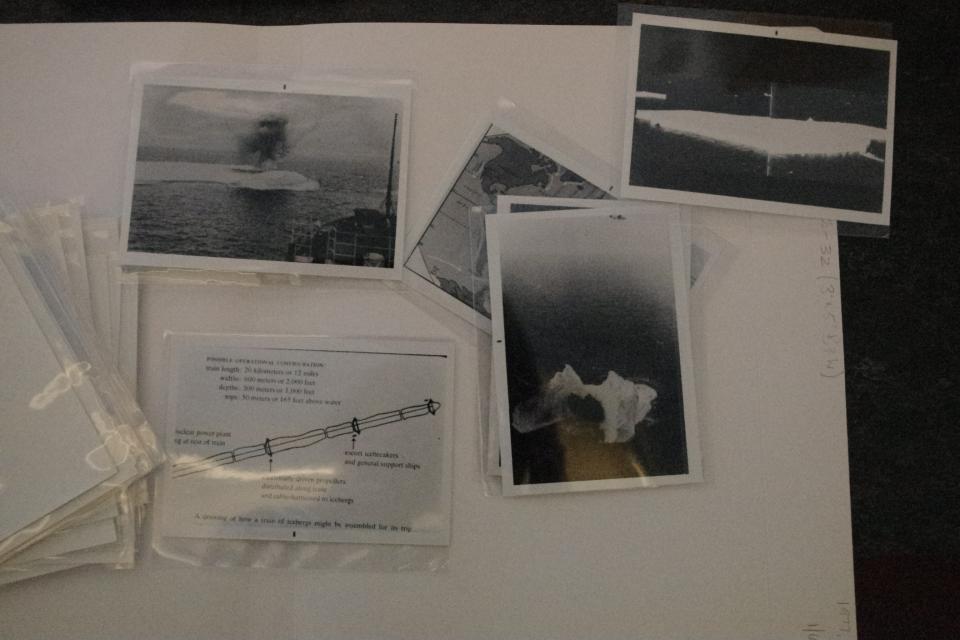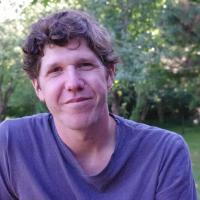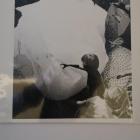On 1 October 1977, the Des Moines Register reported on the moving of an iceberg from Portage Lake in Alaska to the somewhat unlikely destination of Ames, Iowa. Deemed “the most expensive ice cube in the world,” the 2,500-pound (1,133 kg) block of ice, roughly six by five by four feet (1.8 by 1.5 by 1.2 m) in size, would travel wrapped in insulation and dry ice via helicopter, plane, and truck to Ames at a cost of $8,500. This elaborate logistical feat, requiring divers from the US Arctic Naval Research Laboratory to select the berg, an aerial harness to secure it, a refrigerated truck to move it, and, finally, a walk-in refrigerator at the Iowa State Memorial Union to store it, was meant to convey the feasibility of approaching ices of various kinds as sources of potable water. The ultimate, landlocked, destination of the berg, Ames and Iowa State University, is explained by the fact it was to be the site of the First International Conference on Iceberg Utilization, to be held from 2 to 6 October, and largely sponsored by Prince Mohammed Al-Faisal, the official in charge of Saudi Arabia’s desalination program at the time, and the National Science Foundation. This was to be a meeting of some two hundred scientists (glaciologists, marine biologists, amongst others), engineers, as well as corporate and political representatives, coming from 18 nations, all of whom were invested in the idea of treating Antarctic icebergs as a source of fresh water production for the world as a whole.
For participants in the Iceberg Utilization conference, it would have seemed as though ice was omnipresent—a motivational substance that would decorate their plenary hall, cool their drinks, and provide instructional, hands-on evidence of the possibilities inherent in its very materiality. As Richard Cameron, the then head of the NSF’s glacial program, claimed, the objective of the iceberg demonstration project, as made manifest in the block of ice that landed in Ames in early October, was to “provide the conference participants with the opportunity to examine the nature, properties, and viability of suggested utilization techniques of icebergs through visual perception.” In other words, in order to test their evidence-seeking theories on how to go about towing, cutting, and melting Antarctic ice, they could benefit from having the real thing on hand, and, in the process, consolidate the conference’s claim to being a privileged site of new forms of water-related knowledge production.
While the moving of the Alaskan berg might have been a press-savvy way to accomplish this aim, it fit within the conference’s originary logic of harnessing icebergs as a potential resource from a systems viewpoint. In the research proposal submitted by Dr. Abdo Husseiny, professor of nuclear engineering at Iowa State, principal investigator of the proposal, and a close friend of Prince Al-Faisal’s, the conference was meant to be a strong commitment to iceberg harvesting as a global resource practice, and one that could present itself as a viable and cost-effective alternative to desalination. While Prince Al-Faisal was the official in charge of Saudi Arabia’s desalination program, he saw it as costly and inefficient, requiring vast amounts of capital to build desalination plants, and equally vast amounts of energy to run them. By initiating and funding the conference, he was looking towards a future wherein Saudi Arabia would no longer have its non-renewable oil wealth, and would be facing recurring and increasing demands for fresh water. As a result, one of the guiding, water-derived logics of the conference was found in its establishment of a reliable and institutionally-sanctioned form of knowledge surrounding iceberg utilization. In part, this was accomplished through conventional means: conference papers on topics as diverse as the tracking and selection of icebergs and their impact on weather modification; keynote addresses by the likes of glaciologist Henri Bader, the former director of the US Army Cold Regions Research and Engineering Laboratory; and the collection of findings, which were circulated to interested groups of scientists, investors, governments, and the press at large. In addition, the conference was further consolidated as the site of a nascent hydrologic through the active production of what could be thought of as a “second,” mediated form of water: with photographs, films and algorithmic models documenting and presenting the emergent, elemental medium of iceberg water as a legitimate form of resource provision.
Ultimately this flagship event contributed to the formation of nascent hydrologics in the late 1970s that were used to justify incursions into unconventional sites of resource extraction by “dry” nations such as Saudi Arabia. The Iceberg Utilization meeting produced a collection of media that would constitute a form of evidentiary claim in the emergence of increasingly prevalent schemes on the part of water-“poor” regions to achieve viable forms of water provision by the early 1980s. The conference’s active production of a body of documentary evidence underpinning this need for resource expansion gave rise to a hydrologic that could prove, justify, and facilitate the harvesting of Antarctic icebergs as a global fresh water supply. The scheme, to this day, remains a Saudi as well as a global dream, though with reocurring forecasts of iceberg tows. The conference nonetheless signaled how state-sponsored institutions could begin to strategically project the emergence of polar resource frontiers, and what forms of evidentiary production would be adequate to this task. These are historical polar issues that should remain at the front of people’s minds today, particularly under our conditions of anthropogenic climatic change and the increasing pace of glacial melt. If the poles have always been the globe’s future resource frontiers, climate change leads us to ask what lies beyond them.
How to cite
Ruiz, Rafico. “Saudi Dreams: Icebergs in Iowa.” Environment & Society Portal, Arcadia (Summer 2017), no. 19. Rachel Carson Center for Environment and Society. https://doi.org/10.5282/rcc/7900.
ISSN 2199-3408
Environment & Society Portal, Arcadia
 This work is licensed under a Creative Commons Attribution 4.0 International License.
This work is licensed under a Creative Commons Attribution 4.0 International License.
2017 Rafico Ruiz
This refers only to the text and does not include any image rights.
Please click on an image to view its individual rights status.
- Cameron, Emilie. “Climate Anti-Politics: Scale, Locality, and Arctic Climate Change.” In Ice Blink: Navigating Northern Environmental History, edited by Stephen Bocking and Brad Martin, 465–95. Calgary: University of Calgary Press, 2017.
- Carey, Mark. “The History of Ice: How Glaciers Became an Endangered Species.” Environmental History 12 (2007): 497–527.
- Dunaway, Finis. “Cultures of Nature: Twentieth Century.” In A Companion to American Environmental History, edited by Douglas Cazaux Sackman, 266–284. Malden: Blackwell, 2010.
- Gosnell, Mariana. Ice: The Nature, the History, and the Uses of an Astonishing Substance. Chicago: University of Chicago Press, 2005.
- Pyne, Stephen. The Ice: A Journey to Antarctica. Iowa City: University of Iowa Press, 1986.


